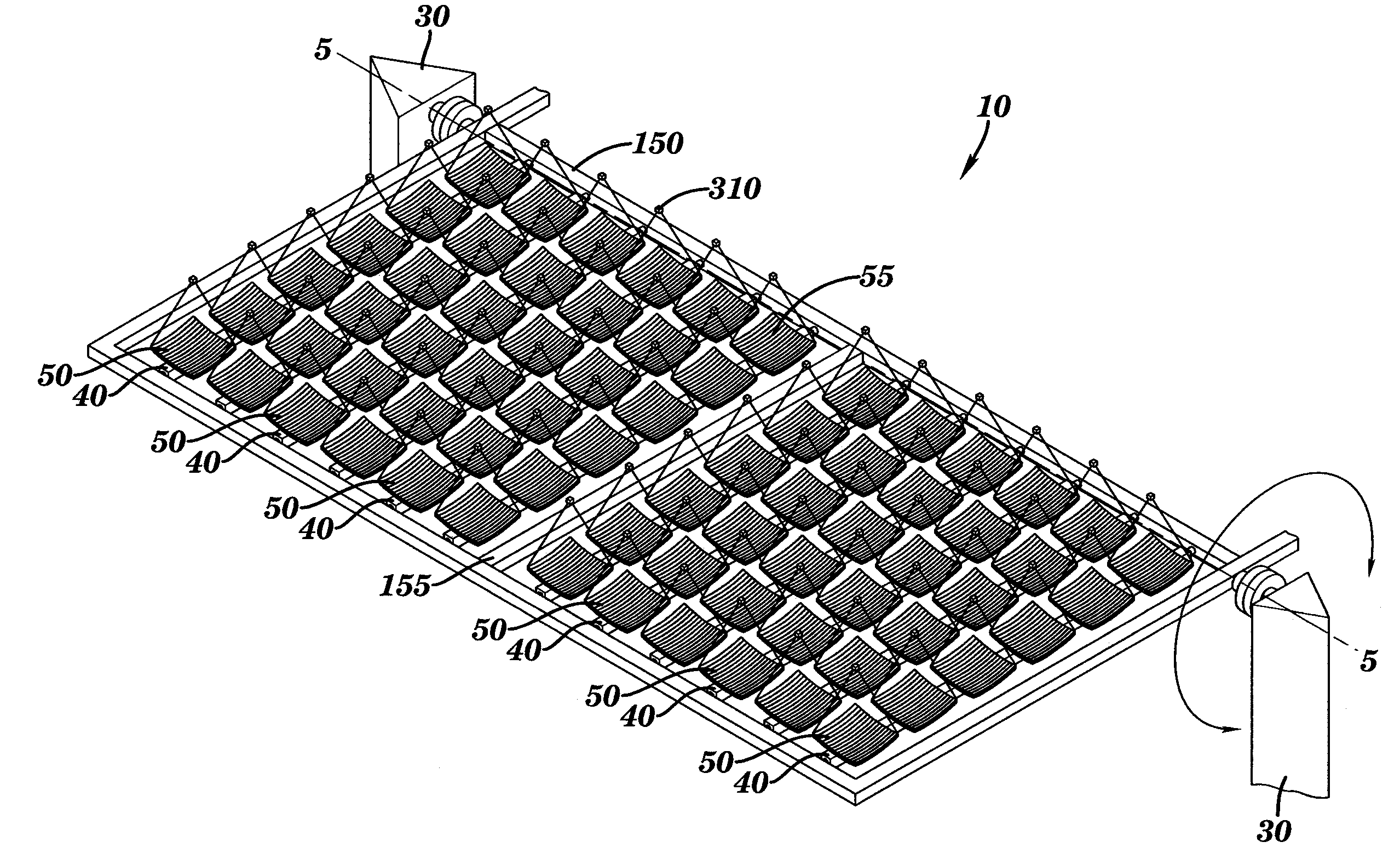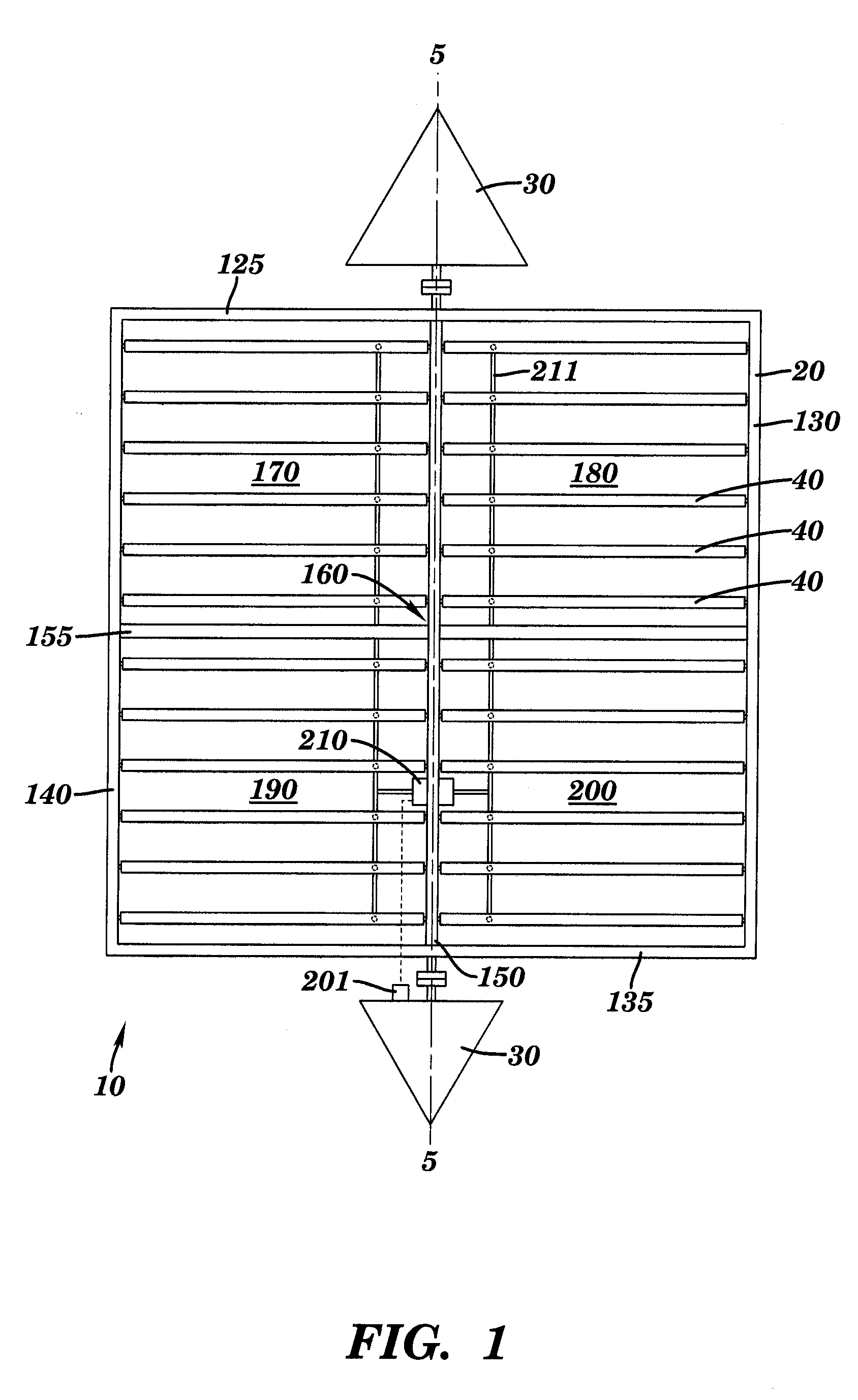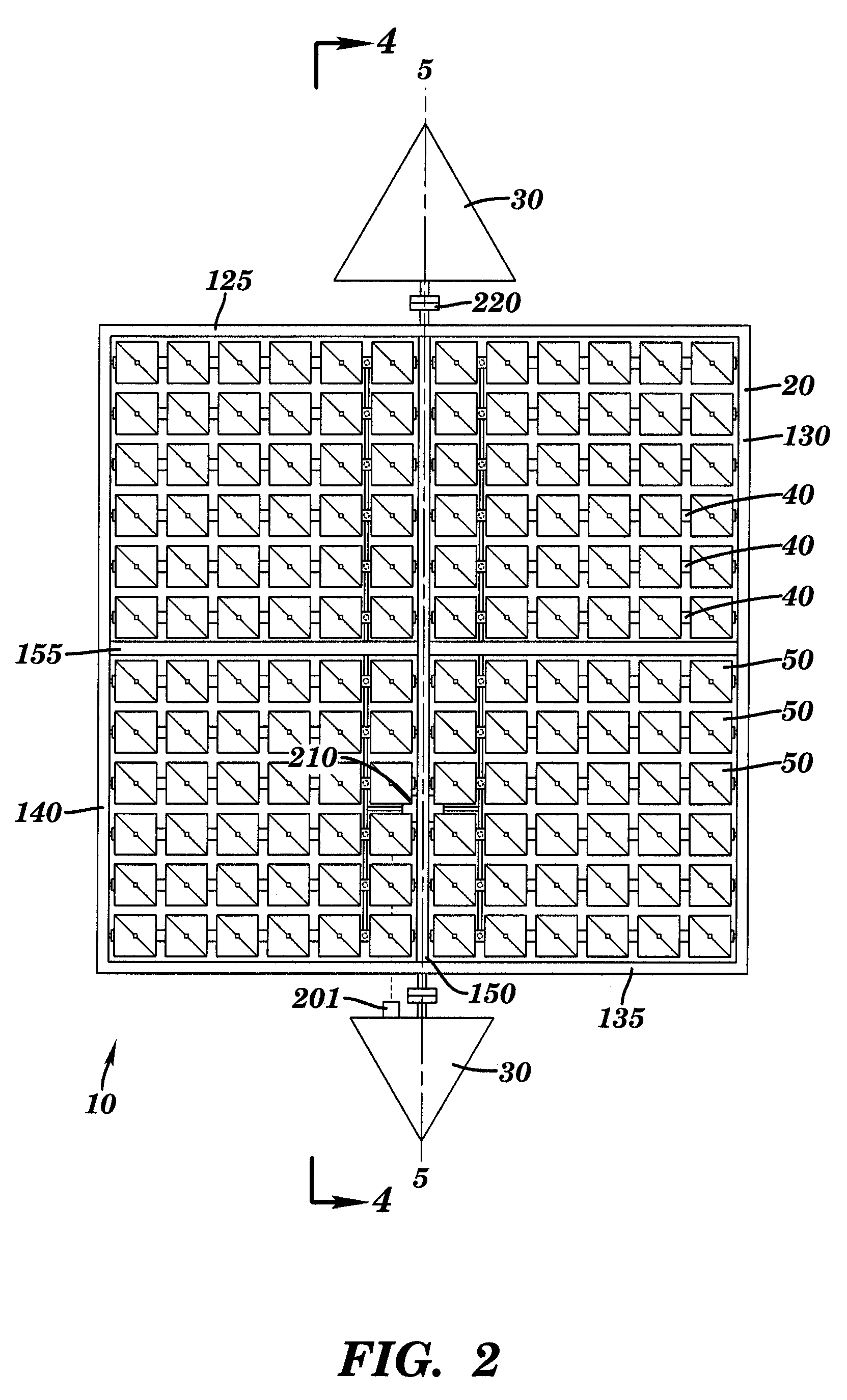Solar concentrator system
a concentrator system and solar energy technology, applied in the field of solar energy generation, can solve the problems of limited power output regulation of convex lens optical system for concentrator system, high cost of semi-conductor pv cells, and additional pv cells
- Summary
- Abstract
- Description
- Claims
- Application Information
AI Technical Summary
Benefits of technology
Problems solved by technology
Method used
Image
Examples
Embodiment Construction
[0015]In accordance with the principles of the present invention, a solar concentrator system and methods for concentrating solar energy to generate electricity are provided.
[0016]In an exemplary embodiment depicted in FIG. 1, a solar panel system 10 includes a supporting structure or frame 20 mounted on support members or towers 30. Frame 20 is rotatably connected to a plurality of optical trusses 40 which support a plurality of solar concentrator reflector modules 50.
[0017]As depicted in FIG. 1, frame 20 includes a North truss 125 opposite a South truss 135 and an East truss 130 opposite a West truss 140. A North-South connecting truss 150 connects North truss 125 to South truss 135. An East-West connecting truss 155 connects East truss 130 to West truss 140. East-West connecting truss 155 and North-south connecting truss 150 are connected to each other at a center area 160. System 10 is divided into four quadrants by the trusses depicted in FIG. 1: first quadrant 170, second quad...
PUM
 Login to View More
Login to View More Abstract
Description
Claims
Application Information
 Login to View More
Login to View More - R&D
- Intellectual Property
- Life Sciences
- Materials
- Tech Scout
- Unparalleled Data Quality
- Higher Quality Content
- 60% Fewer Hallucinations
Browse by: Latest US Patents, China's latest patents, Technical Efficacy Thesaurus, Application Domain, Technology Topic, Popular Technical Reports.
© 2025 PatSnap. All rights reserved.Legal|Privacy policy|Modern Slavery Act Transparency Statement|Sitemap|About US| Contact US: help@patsnap.com



